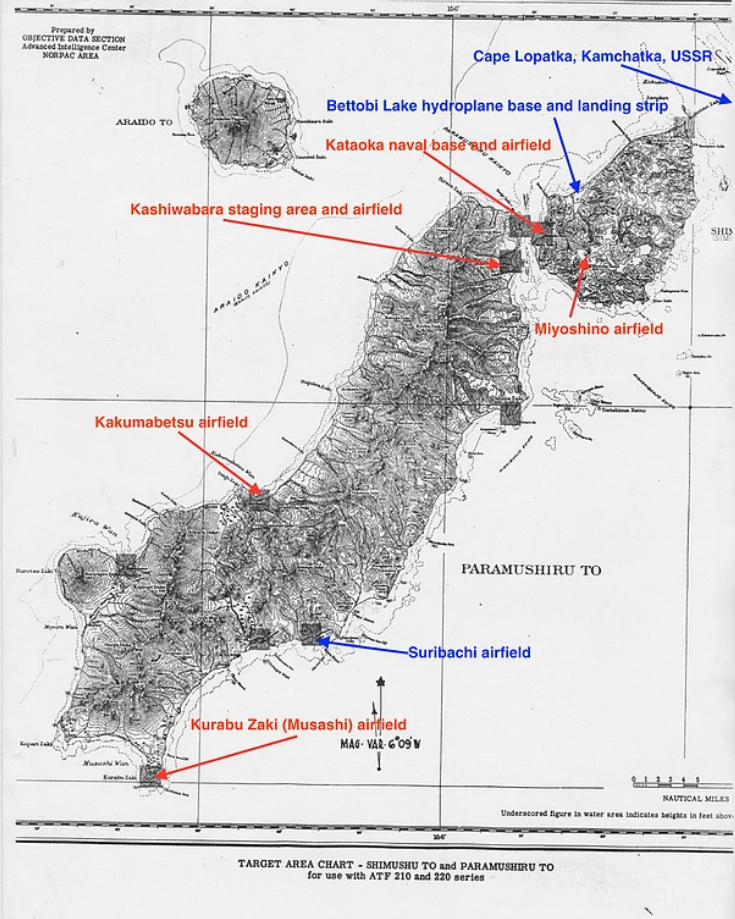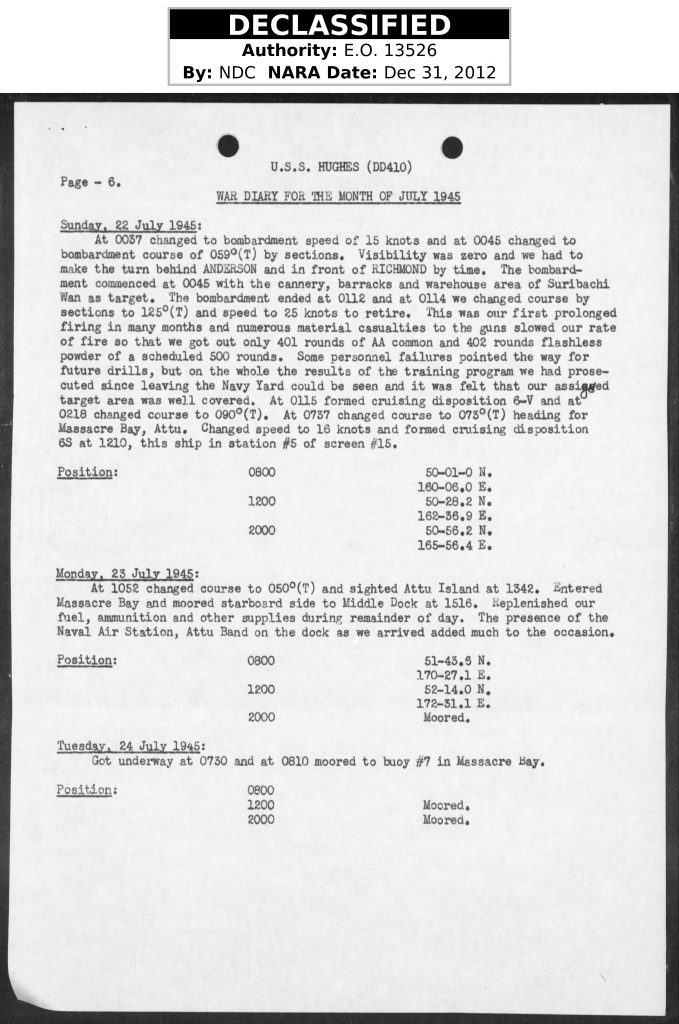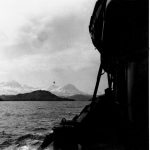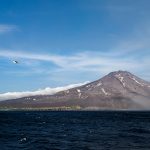Bombardment of Surabachi
 Surabachi was a Japanese Naval Base and Airfield located on Paramushir Island in the Kuriles. Surabachi and the other Japanese airfields on the island had been subject to sporadic air raids from the US Air Force and US Navy starting in 1943 and would continue the end of the war. All of the attacks on Paramushir by the Americans, including the one on July 22nd by the Hughes, originated from the bases in the Aleutian Islands.
Surabachi was a Japanese Naval Base and Airfield located on Paramushir Island in the Kuriles. Surabachi and the other Japanese airfields on the island had been subject to sporadic air raids from the US Air Force and US Navy starting in 1943 and would continue the end of the war. All of the attacks on Paramushir by the Americans, including the one on July 22nd by the Hughes, originated from the bases in the Aleutian Islands.
The July 22nd attack began just before 1:00am with the Hughes firing nearly 500 rounds at the Japanese cannery, barracks, and warehouse on the island. The bombardment lasted about 30 minutes and was the Hughes’s first return to major action since the kamikaze attack in December.
Here is a description of the base that the Hughes bombarded on July 22nd, 1945:
Suribachi Bay on the Southeast coast of Paramushiru(Japanese spelling) also boasted one of the best harbors on the island with four large boat piers 100 to 400 feet in length, two wharves, a massive salmon cannery, numerous warehouses and fish drying stations and a meteorological observatory that supported a large fishing fleet. Suribachi Bay area contained approximately 340 buildings, of which 85 were barracks and 190 were warehouses and cannery buildings. The largest concentration of canneries in the northern and central Kuriles were located in the Suribachi Bay area.
The 276-foot Suribachi volcanic cone dominated the area. The airfield consisted of one hard surfaced runway 4,000 feet by 225 to 265 feet wide and a graded cross landing strip supported by 2,000 yards of paved taxiway. A larger 150 by 170-foot hangar was located on the north end of the main runway and twenty-three blast shelters were located along its side. No evidence of aircraft were noted in late 1944 although the airfield could accommodate a maximum capacity of 30 fighters and 20 twin-engine bombers.
The area was well defended with two three-inch coastal defense guns, two dual purpose guns, ten anti-aircraft guns, eleven automatic anti-aircraft guns, seven machine gun positions and forty-one covered gun positions of various sizes. An extensive anti-tank trenching system was noted. Two search lights were observed. Two radar and two radio stations were located in the area. A road system connected Suribachi with the other parts of the island. Otomae Bay on the Southeast coast contained two 140 millimeter coastal defense guns emplaced in camouflaged positions southwest of the fisheries there was well a covered machine gun positions and 1,450 yards of anti-tank trenches. (Source: Study, Advanced Intelligence Center, North Pacific Area, The Kurile Islands, Vol. I, pp. 35-40.)






